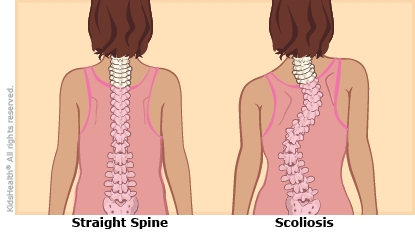When a child has scoliosis, their spine curves in the shape of an "S" or a "C" instead of going straight up and down.
The health care provider may order an X-ray to see how big your child's curve is.
If your child's scoliosis is mild, it means the curve is small and isn't causing problems right now. A curve can get bigger as kids grow, so the health care provider may want to check your child's back every few months.
If the curve is bigger, the health care provider may want your child to wear a brace. Wearing a brace correctly can often stop the spine from curving more.
Some kids with scoliosis need surgery to correct the curve.




When is surgery needed for scoliosis? When a scoliosis curve is big, causes other problems, or wouldn't be helped by bracing, surgery may be recommended. This surgery is called spinal fusion. During spinal fusion, doctors put small pieces of bone, metal rods, and screws into the spine to straighten it.
How can surgery help with scoliosis? Surgery helps kids avoid problems like back pain, breathing trouble, or heart problems. After a full recovery, kids can play sports again and do all the activities they enjoyed doing before surgery.